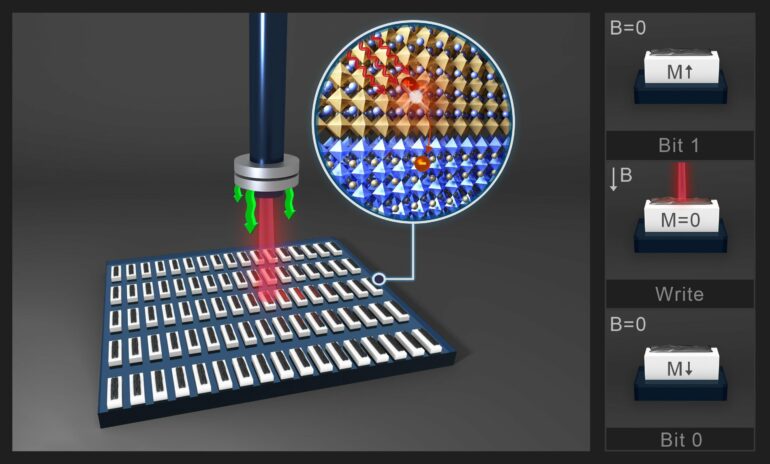Research groups from NIMS, Seagate Technology, and Tohoku University have made a breakthrough in the field of hard disk drives (HDD) by demonstrating the feasibility of multi-level recording using a three-dimensional magnetic recording medium to store digital information.
The research groups have shown that this technology can be used to increase the storage capacity of HDDs, which could lead to more efficient and cost-effective data storage solutions in the future.
Data centers are increasingly storing vast amounts of data on hard disk drives (HDDs) that use perpendicular magnetic recording (PMR) to store information at areal densities of about 1.5 Tbit/in2. However, to transition to higher areal densities, a high anisotropy magnetic recording medium consisting of FePt grains combined with heat-assisted laser writing is required.
This method, known as heat-assisted magnetic recording (HAMR), is capable of sustaining areal recording densities of up to 10 Tbit/in2. Furthermore, densities of larger than 10 Tbit/in2 are possible based on a new principle demonstrated by storing multiple recording levels of 3 or 4 compared with the binary level used in HDD technology.
In the study, published in Acta Materiala, the team succeeded in arranging the FePt recording layers three dimensionally, by fabricating lattice-matched, FePt/Ru/FePt multilayer films, with Ru as a spacer layer.
Measurements of the magnetization show the two FePt layers have different Curie temperatures. This means that three-dimensional recording becomes possible by adjusting the laser power when writing.
In addition, the researchers demonstrated the principle of 3D recording through recording simulations, using a media model that mimics the microstructure and magnetic properties of the fabricated media.
The three-dimensional magnetic recording method can increase recording capacity by stacking recording layers in three dimensions. This means that more digital information can be stored with fewer HDDs, leading to energy savings for data centers.
In the future, the researchers plan to develop processes to reduce the size of FePt grains, to improve the orientation and magnetic anisotropy, and to stack more FePt layers to realize a media structure suitable for practical use as a high-density HDD.
More information:
P. Tozman et al, Dual-layer FePt-C granular media for multi-level heat-assisted magnetic recording, Acta Materialia (2024). DOI: 10.1016/j.actamat.2024.119869
Provided by
National Institute for Materials Science
Citation:
Proof-of-principle demonstration of 3D magnetic recording could lead to enhanced hard disk drives (2024, April 4)



